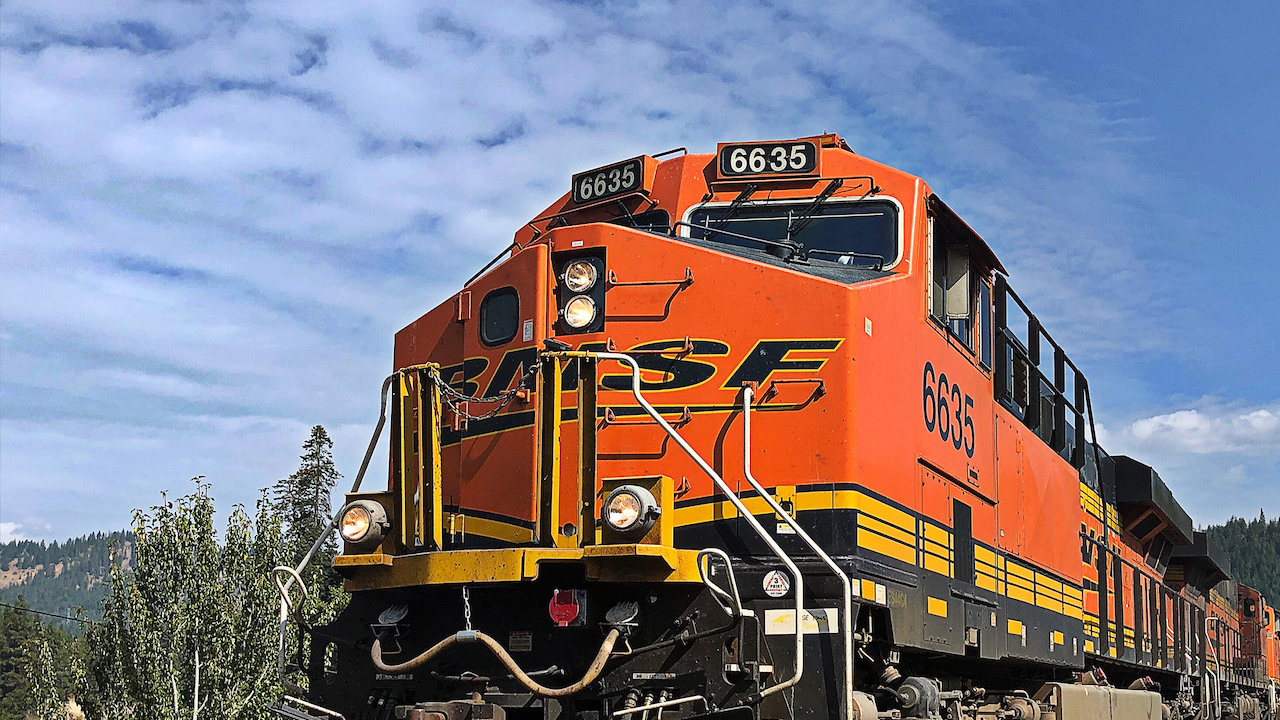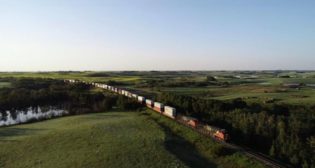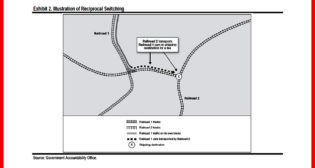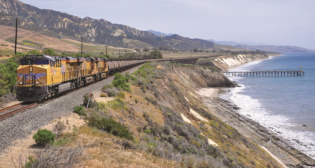
BNSF, BRC Seek FRA Waiver Expansion for Brake Health Program (UPDATED June 26)
Written by Marybeth Luczak, Executive Editor
BNSF on June 20 reported that it is partnering with the TCU/IAM Brotherhood of Railway Carmen Division (BRC) to request a test waiver expansion from the Federal Railroad Administration (FRA) for its Brake Health Effectiveness Program.
The Class I railroad said the program uses “a safety technology that measures the temperature of car wheels as the train passes through detectors where the wheels are analyzed to ensure the braking systems are operating properly.” That technology is said to assist BRC inspectors “by focusing their inspection and repair efforts on specific cars, which helps make the inspection process more effective. If no defects are found, the train will continue to its destination.”
For four years, the railroad has used the technology on intermodal and grain cars in select areas of the Southern Transcon through an FRA test waiver, the railroad reported this month in the Rail Talk section of its website. It works this way:
“First, the train runs past a detector without its brakes applied. This tests the temperature on all wheels, and if any are detected as running hot, it tells the carmen there could be an issue, like sticking brakes. If the wheels are detected running cold, the brakes are working as intended.
“Then we check for the opposite issue: defective brakes. The train passes through a second detector with its brakes applied. If the train passes the detector and the wheels register as hot due to friction, it’s a good sign that the brakes on each car are working properly. The train then continues toward its destination, bypassing a manual inspection without stopping.
“This process saves an average of 40 minutes of inspection time per train.”
BNSF executives addressed the benefits of the Brake Health Effectiveness program in April 2022. “With thermal detector technology, we can gather more data about the health of brakes on a moving train than can be collected from a visual inspection,” BNSF Executive Vice President and Chief Operations Officer Matt Igoe said at that time. “It’s another part of the way BNSF continues to push the operation to be safer, more reliable, and more efficient for our customers.” BNSF explained that shifting to a technology-driven, conditions-based approach allows resources to be focused on cars that the railroad knows need repairs and improves overall brake health in the fleet; additionally, because the detectors work in any weather condition, the railroad can minimize the amount of time carmen are out inspecting in inclement weather or poor walking conditions.
After seeing “positive results” using the technology—“a 5% detection rate per cars inspected compared to a 0.04% detection rate through manual, visual inspections”—BNSF and BRC are now seeking to expand the test waiver to the Powder River Division to service the coal market, the railroad reported this month in Rail Talk.
“We’re proud to partner with BRC to develop and implement technology that drives a safe and efficient rail network,” BNSF Vice President, Mechanical Keith Solomons told Rail Talk. “Embracing technological developments like BHE [Brake Health Effectiveness] not only creates a safer network, but ultimately allows us to grow the railroad together which is in the best interest of all of us.”
BRC General President Donald Grissom told Rail Talk: “The BRC and BNSF are working together to support the expansion of a technology that has a positive impact on rail safety and train braking performance.”
BNSF noted on June 20 that it is also collaborating with BRC “on future technologies, specifically machine vision that has the potential to drive additional safety gains for car inspectors and serve as a tool to make inspections more effective.” It added that it “continually looks for opportunities such as BHE to partner with all of our union employees to advance safety and service through technology.”
In a related development, BNSF in April announced that it will grant individual paid sick days to its railroaders who are BRC members.



